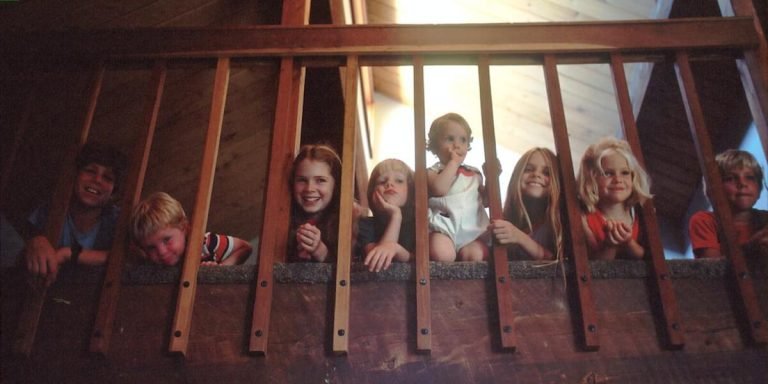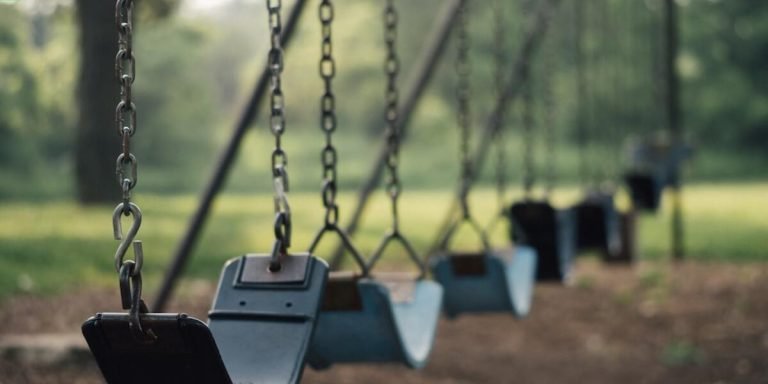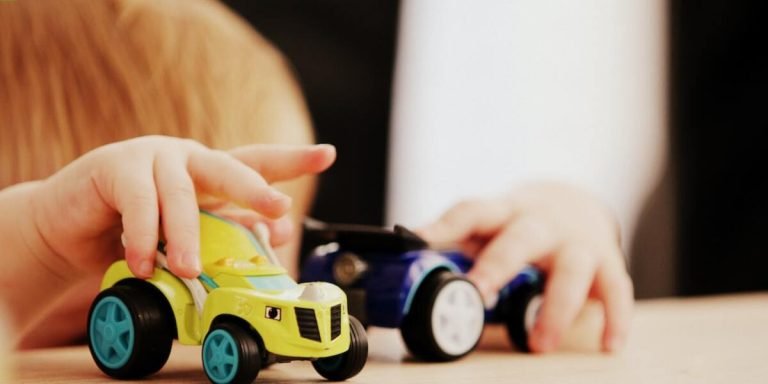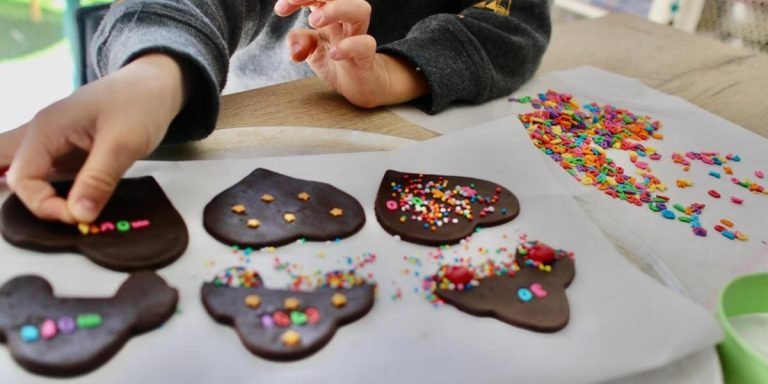Arts and Crafts for 3 Year Olds: Igniting Creativity Early On
The power of arts and crafts for 3 year olds should not be underestimated. Within those playful colors, quirky shapes, and whimsical patterns lies a treasure chest of hidden learning opportunities – fostering creativity while honing essential motor skills. Activity Based Learning (ABL) through these artistic endeavors can play an instrumental role in engaging young minds while providing them with the foundations necessary to flourish.
Arts and Crafts activities are more than just mere pastimes; they act as practical tools that make ABL come alive! Through such tasks, children learn about different textures, dimensions, color recognition and their imaginative prowess gets amplified significantly. Not only does this cultivate original thinking but it also promotes cognitive development which is critical at this age when their brains exhibit enormous growth potential.
Did you know?
Surprisingly, a study published in the journal PLOS ONE found that 3-year-olds’ performance on drawing tasks correlates strongly with their intelligence at age 14. This shows how early arts and crafts activities can influence cognitive development.
The Role of Arts and Crafts in Enhancing Activity-Based Learning for Toddlers
Art and craft activities for 3 year olds have emerged as influential tools in promoting activity-based learning. They are not merely fun-filled exercises but also an excellent platform to hone various skills critical in early childhood education. Thanks to these endeavors, children can develop fine motor skills, enhance creativity, improve concentration, and gain a deeper understanding of the world around them.
In today’s digital era where technology integration is key to successful pedagogy; arts and crafts bridge the gap between hands-on experiences and tech-centered instruction methods remarkably well. For instance, they may involve using interactive online platforms that guide young learners through creative projects or employing smart devices equipped with augmented reality features that make everyday art materials come alive before their eyes.
simultaneously fostering kinesthetic intelligence which is vital for boosting cognitive development at this tender age.
Undeniably then fusing high-tech elements into traditional arts & crafts isn’t just novel but necessary in bolstering modern toddler-centric learning dynamics.
Incorporating Art Projects to Develop Fine Motor Skills
In the ever-evolving domain of children’s education, introducing arts and crafts for 3 year olds is an outstanding strategy to turn learning into a fun-filled adventure. Activity-based learning gets substantial reinforcement when these engaging art projects are combined with technology integration.
Every stroke of color that a child applies on paper contributes towards strengthening their fine motor skills. These early brush strokes further cultivate patience as well as precision in toddlers – essential traits required throughout life.
Say hello to DIY digital artwork sessions where your toddler can splash virtual colors without messy repercussions! Interactive tablet programs provide multiple art tools mimicking real-life materials such as paintbrushes, pastels and watercolors. This technique serves dual benefits- fostering creativity while familiarizing them with modern tech gadgets at tender age itself!
Consider adopting easy-to-make origami models into everyday lessons about shapes and symmetry using activity based learning methods. Origami ‘magic balls’ or colorful geometric patterns not only wire up little minds but also help develop manual dexterity.
Clay modeling undoubtedly reigns supreme among all craft activities aimed at nurturing fine motor development in 3 years old kids. Digital platforms like virtual clay-modelling apps now bring this immersive experience right at your fingertips making it easier than any time before!
Technology integrated bead threading exercises supercharge spatial awareness besides training tiny fingers to grasp accurately aiding growth of muscular coordination substantially better compared to traditional classroom practices alone.
Crafting as a Means to Teach Colors, Shapes, and Patterns
Crafting is an exciting and engaging way to introduce your 3-year-olds to a variety of concepts, most importantly colors, shapes, and patterns. It not only makes learning enjoyable but also instills creativity in young minds.
Firstly we will talk about how arts and crafts can be utilized for teaching colors. Imagine handing out different color papers or paints to toddlers during the art activity time; it’s like opening up a whole new colorful world in front of them! Now let’s guide them through creating their very own masterpiece using these vibrant shades – this doesn’t just recall color names but forms strong associations between visuals and words – quite beneficial for cognitive development!
Moving on to shapes: Crafting with playdough or clay effectively teaches kids about various figures. Hand them some tools; show illustrations where they spot the same shape so that their small hands get busy sculpting similar objects. Seeing circles turn into buttons or squares formed as blocks help children recognize shapes more naturally than traditional rote methods could ever do.
Lastly, teaching patterns becomes effortless when crafting comes along side by side with learning objectives! Use beads sequence activities where little ones thread one red bead followed by two blue ones repeatedly- voila you have introduced simple pattern sequencing before they even realize it!
By incorporating arts and crafts into daily schedules via theme-based projects relating “Technology Integration in Education”, parents & educators achieve twin objectives: making education fun while preparing youngsters appropriately amidst rapidly tech-evolving scenarios.
Designing Engaging Craft Activities Suitable for 3-Year-Olds
Designing craft activities for 3-year-olds can be a delightful challenge. This age group is curious, creative and consistently on the move. Hence, it’s crucial to create art projects that are not merely appealing but also engaging and developmentally suitable for them.
In today’s technology-driven world, integrating digital tools into crafting sessions has become an innovative approach in early childhood education. Use of technological applications such as virtual painting or animation software, supports their learning process while adding fun dimensions to arts and crafts time.
Activity-based learning plays a pivotal role here since young learners benefit massively from hands-on experiences. For instance, encouraging tots to draw shapes or figures on touchscreen devices enhances their hand-eye coordination along with stimulating artistic imagination.
Thus carefully designed tech-integrated craft activities present youngsters with laboratories where creativity meets cognitive growth – ideal amalgamation of arts & crafts for 3 year olds in this digitally advanced era.
Choosing Age-Appropriate Materials for Safety and Fun
When it comes to choosing arts and crafts for 3 year olds, safety should always come first. But that doesn’t mean you can’t have fun too! Start by selecting materials designed specifically for their age group.
Here’s a convenient guide on how to select the safest and most engaging crafting options.
First of all, consider the size of crafting materials. Little hands need larger objects that are easy to hold and manipulate. Beads or buttons might seem like interesting additions but could pose a choking hazard if ingested accidentally.
Next up is texture – cloth strips, foam sheets or textured papers are perfect craft material choices as they’re soft yet intriguing enough for little fingers eager to learn new tactile experiences.
Avoid anything excessively sticky when deciding on adhesive methods; glue sticks over liquid glues would be more suitable considering control issues at this age and reduces potential messiness significantly!
While picking colors, opt for non-toxic paints- preferably water-based ones which easily wash off surfaces (and curious youngsters!). They also provide vibrant output making them doubly efficient in catching toddlers’ interest while keeping your mind at ease about any accidental graffiti on walls!
Coming onto technological integration into these activities; Interactive e-books with DIY simple projects using everyday household items ensure children don’t miss out digitally either whilst introducing elements from daily routines enhancing comprehension levels impressively.
Structuring Creative Sessions for Maximum Engagement
Starting a creative session for your 3-year-old with well-structured arts and crafts can be quite the task. However, it becomes significantly easier when you incorporate technology that aids in childhood education. To integrate tech-based activity learning effectively into crafting sessions, here are some strategies.
1. **Identify Age-Appropriate Tools**: Getting age-appropriate educational toys is of utmost necessity to ensure children enjoy while they gain knowledge.
2. **Set Clear Goals**: Every art project should have a clear end goal which incrementally contributes towards enhancing creativity.
3. **Multi-sensory Integration**: Make use of digital tools like touchscreens or interactive play sets to promote multi-sensory integration as this helps boost their cognitive skills.
4. **Use Interactive Platforms/**: Utilize apps and websites that offer fun craft ideas specifically tailored towards children aged three years old will serve helpful.
Remember, the perfect blend between traditional crafting exercises and innovative technological devices offers an immersive environment where arts and crafts for 3 year olds serves more than just keeping kids engaged – it makes learning enjoyable too!
Measuring the Impact of Arts on Early Childhood Development
The relationship between the arts and early childhood development is an area of significant research interest in 2023. Parents, educators, and developmental psychologists are now more than ever keen on examining how activities such as painting or craft making can help foster cognitive growth in children aged three years old.
Arts and crafts offer a fun-filled approach to activity-based learning. The act of drawing shapes, for instance, helps kids understand basic geometry concepts while boosting their fine motor skills – essential elements for preparing youngsters acadically. Additionally, it enhances creativity by giving them freedom to experiment with different materials and colors laying foundations not only for academic success but also emotional wellbeing.
Moreover, incorporating technology into this process plays a critical role in augmenting its benefits further. With user-friendly apps designed specifically around arts & crafts themes available today; parents find it easier to introduce structured yet engaging tasks that stimulate both left-brain (logical) & right-brain (creative) capacities simultaneously thus promoting balanced brain development among 3 year olds.
While evaluating the impact might seem challenging due to complexity involved; advancements like artificial intelligence-enabled smart toys which accurately record child’s engagement levels have made tracking progress simpler propelling a new era where art merges seamlessly with education delivering exponential outcomes paving way towards nurturing cerebral generation next!
Assessing Cognitive Growth Through Artistic Expression
Artistic expression is a powerful tool that allows our little ones to communicate complex emotions and thoughts, even before they can articulate them clearly through speech or writing. When it comes to arts and crafts for 3 year olds, integrating these activities into their routine could significantly enhance cognitive growth.
By engaging young children in artsy tasks like coloring, drawing shapes or making craft models, we stimulate both sides of their brains – the logical side responsible for understanding rules and patterns; alongside the creative one which thrives on imagination. In fact, it’s not only about crayons meeting paper! It also encompasses music creation with toy instruments or rhythmic clapping along with exploring textures by touch while sculpting play dough figures.
Moreover, art-based exercises provide opportunities to establish foundational academic skills such as problem-solving abilities when dealing with an oddly shaped model requiring careful placement within two-dimensional space. Numeracy too gets reinforced subtly whenever counting strokes are made during painting sessions.
Arts also help boost language development amongst preschoolers due to its innate nature of sparking curiosity leading kids asking questions related their artworks thereby enhancing vocabulary over time.. Emotional intelligence sees rise since portraying feelings onto canvas aids empathy construction towards others’ viewpoints different than own self thus building principle compassion growing up furthermore helps prepare school life awaiting ahead starting soon enough post toddler phase just few years away..
Tracking Social and Emotional Benefits from Group Crafting Activities
Engaging in arts and crafts for 3 year olds can offer more than mere fun, it opens up a world of learning through play. As such, tracking the social and emotional benefits from group crafting activities is pivotal to gaining insights into their developmental progress.
When young children are immersed in creating art as part of a group activity, they learn essential skills such as collaboration. They help each other with tasks like passing crayons or sharing glue sticks which fosters teamwork – an important aspect of early childhood development that prepares them for future scholarly and professional collaborations.
Moreover, these creative outlets often engage little ones emotionally; letting them express themselves freely without fear of judgment presents opportunities to understand their feelings better. For instance, observing whether kids choose bright colors indicating happiness or darker hues reflecting sadness provides clues about their current state-of-mind.
Notably too is empathy cultivated during these sessions when toddlers see peers perhaps struggling with a task yet persevering nonetheless – this indirectly teaches patience and builds resilience among youngsters while also helping create stronger bonds amid participants—a cornerstone for developing healthy relationships later on.
From the standpoint of technology integration in education specifically relating to activity-based learning—the use advanced tools stimulate innovative thinking amongst our tiny tots. Interactive apps tailored towards artsy endeavors serve not only spruce creativity but also guide cognitive abilities—enhancing problem-solving tactics via unique artistic challenges thereby making complex concepts digestible even at this tender age!
Conclusion
In the wondrous journey of parenting and educating, embracing arts and crafts for 3 year olds is an essential step towards stimulating their imagination. The seeds you sow now in accentuating your child’s creativity will blossom into a lifelong love for self-expression, problem-solving skills, fine motor development and much more.
Don’t just stop at art; explore our website to uncover additional insightful articles about childhood education along with tips that assist parents as well as educators alike in navigating early learning avenues. Packed full of relevant resources designed around parent and educator support – dive right on it! Your next eureka moment might be lurking within one click away!







